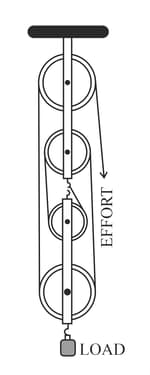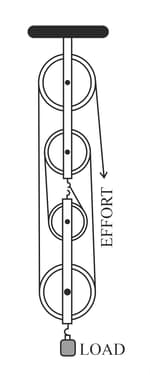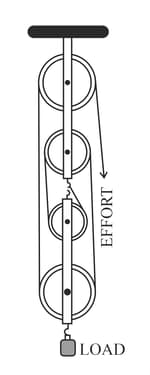R P Goyal and S P Tripathi Solutions for Chapter: Machines, Exercise 3: EXERCISE-3(C)
R P Goyal Physics Solutions for Exercise - R P Goyal and S P Tripathi Solutions for Chapter: Machines, Exercise 3: EXERCISE-3(C)
Attempt the practice questions on Chapter 3: Machines, Exercise 3: EXERCISE-3(C) with hints and solutions to strengthen your understanding. Selina Icse Concise Physics For Class 10 solutions are prepared by Experienced Embibe Experts.
Questions from R P Goyal and S P Tripathi Solutions for Chapter: Machines, Exercise 3: EXERCISE-3(C) with Hints & Solutions
The velocity ratio of a single fixed pulley is always more than one.
The velocity ratio of a single movable pulley is always .
The velocity ratio of a block and tackle system is always equal to the number of strands of the tackle supporting the load.
The mechanical advantage of an ideal single movable pulley is:
The given figure below shows a block and tackle system of pulleys used to lift a load. How many strands of tackle are supporting the load?

The given figure below shows a block and tackle system of pulleys used to lift a load. Draw arrows to represent tension in each strand.
The given figure below shows a block and tackle system of pulleys used to lift a load. What is the mechanical advantage of the system?

In the given figure below it shows a block and tackle system of pulleys used to lift a load. When load is pulled up by a distance , how far does the effort end move?


